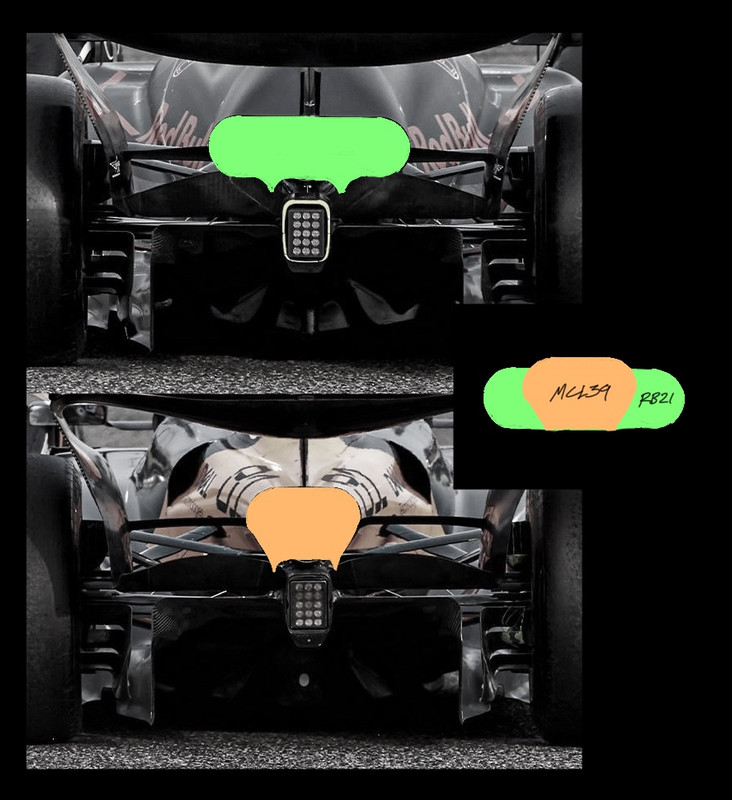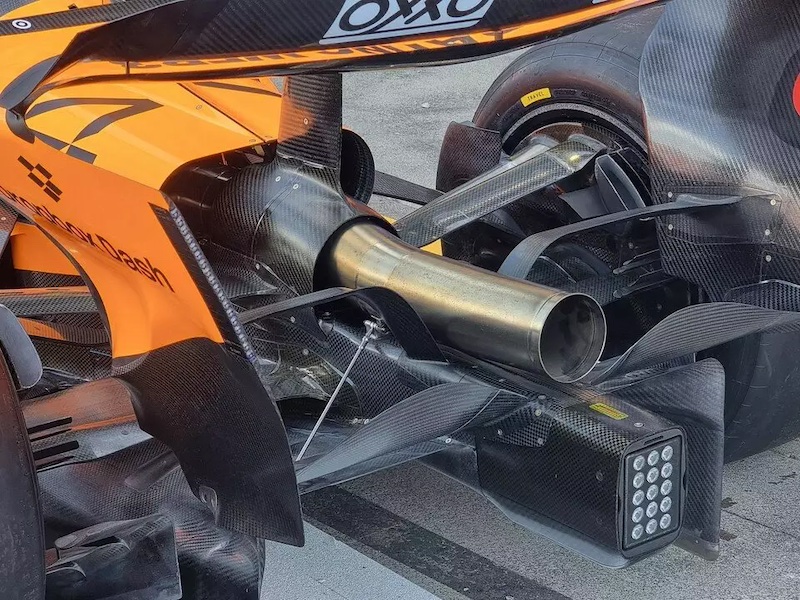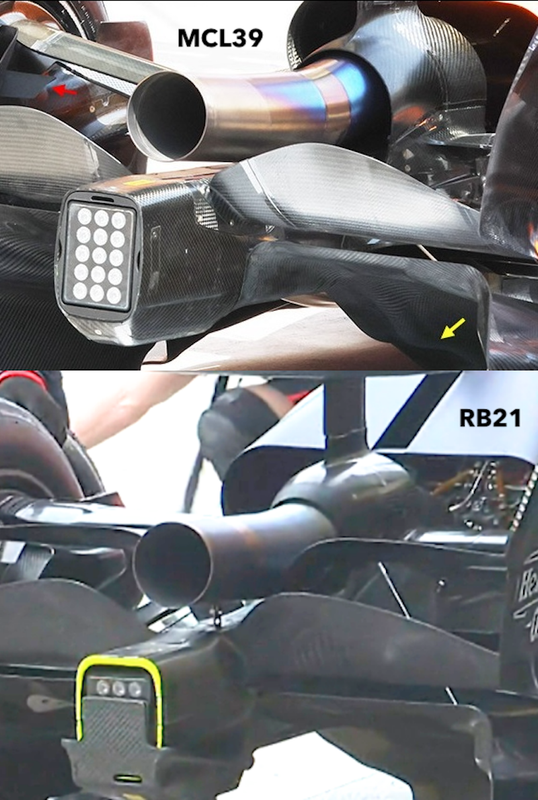The races take on the rear brakes
https://www.the-race.com/formula-1/clue ... ke-design/
- Login or Register
No account yet? Sign up
This is echo of that which I've already written in preceeding post on this thread.CjC wrote: ↑12 May 2025, 11:18The races take on the rear brakes
https://www.the-race.com/formula-1/clue ... ke-design/
This doesn't APPEAR to be part of the component set we see in images posted within this thread. It all looks to be aimed toward "screening" by separated and intelligently so, air path handling to prevent as much heat as possible from reaching the wheel/tire assembly.FittingMechanics wrote: ↑12 May 2025, 12:32With the comments Key made in 2022 (about having issues with the flow stalling or reversing) I think it's a good bet to assume that the trick is with internal piping that stalls under lower speeds, so they rims are not cooled as much when doing a slow prep lap, and then are cooled a lot when you are at top speed.
This would allow them to get temperature into the tires on a warmup lap but it would cool much better at high speeds (and in the race) keeping their rear temperatures in check.
Only problem I see with this is that I'd expect them to have worse warmup after a pitstop.
Just putting more cooling should be a simple thing for teams to do. I really don't think the "trick" that everyone is trying to figure out comes down to "bigger brakes". Or that it's just "isolate the brakes from the rims".Farnborough wrote: ↑12 May 2025, 13:39This doesn't APPEAR to be part of the component set we see in images posted within this thread. It all looks to be aimed toward "screening" by separated and intelligently so, air path handling to prevent as much heat as possible from reaching the wheel/tire assembly.
There's not really conclusive evidence of fast warm up to support that hypotethical as far as generally visible. It seems to be the most tenuous if taken in context of getting really fast pace (attributed to warm up) in Q sessions. Where as the "cooling" side of equation seems very firmly on display against their peer group performance.











Except this is exactly when you don’t want it to stall as low speed corners on a race track typically come after the the biggest brake zones, which would produce the most heat.FittingMechanics wrote: ↑12 May 2025, 12:32With the comments Key made in 2022 (about having issues with the flow stalling or reversing) I think it's a good bet to assume that the trick is with internal piping that stalls under lower speeds, so they rims are not cooled as much when doing a slow prep lap, and then are cooled a lot when you are at top speed.
This would allow them to get temperature into the tires on a warmup lap but it would cool much better at high speeds (and in the race) keeping their rear temperatures in check.
Only problem I see with this is that I'd expect them to have worse warmup after a pitstop.




warming up rear tyres is a non issue AFAIKFittingMechanics wrote: ↑12 May 2025, 12:32With the comments Key made in 2022 (about having issues with the flow stalling or reversing) I think it's a good bet to assume that the trick is with internal piping that stalls under lower speeds, so they rims are not cooled as much when doing a slow prep lap, and then are cooled a lot when you are at top speed. .
Is this accurate? Mclaren has additional outlets further forwards on the left and right side which you have not highlighted. They are not "small". There must be mass continuity so the airflow from the rear exit is not automatically "higher". Some of the air mass has exited already from the pair of outlets located further forwards. Therefore, assuming the two cars have similar heat rejection requirements and similar internal losses, it is not apparent that Mclaren would have much "greater" cooling exit velocity from the central cooling exit at the rear.vorticism wrote: ↑14 May 2025, 19:33
The size of the cooling outlets indicates that Mclaren have the highest cooling outflow velocity. Greater velocity allows them to move the same air mass through smaller outlets. It is evindent in some photos that the MCL39 has the most developed internal ducting; that’s the secret there, which is to say, nothing really to do with the radiators themselves nor the power unit or the coolant, all of which are so regulated anyway that I can't expect them to be performance differentiators on their own.

The drawing is accurate to the extent the images are the same size scaled to the common exhaust pipe diameter and rain light size. As for the hypothesis, it is what it is. The MCL39 louvers are smaller in area than the green spaces in the cannon comparison, and this includes after the cannon height difference is also removed from those green spaces, which is to say, the total outflow area of the MCL39's combined louvers and cannon is smaller than RB21's cannon. Both cars utilize lower suspension arm portal outlets so these were not considered.The total MCL39 cooling outflow area may be something on the order of 95% of the RB21. Also I did not include the RB21's spine outlet, which when included should favor estimation errors toward the hypothesis.AR3-GP wrote: ↑15 May 2025, 16:10Is this accurate? Mclaren has additional outlets further forwards on the left and right side which you have not highlighted. They are not "small". As there must be mass continuity, then the airflow from the back is not automatically "higher". The Red Bull does not have forward exits in that picture. So assuming similar engine/intercooler heat rejection requirements, I don't think it's straightforward to say one car automatically has higher cooling exit velocity.